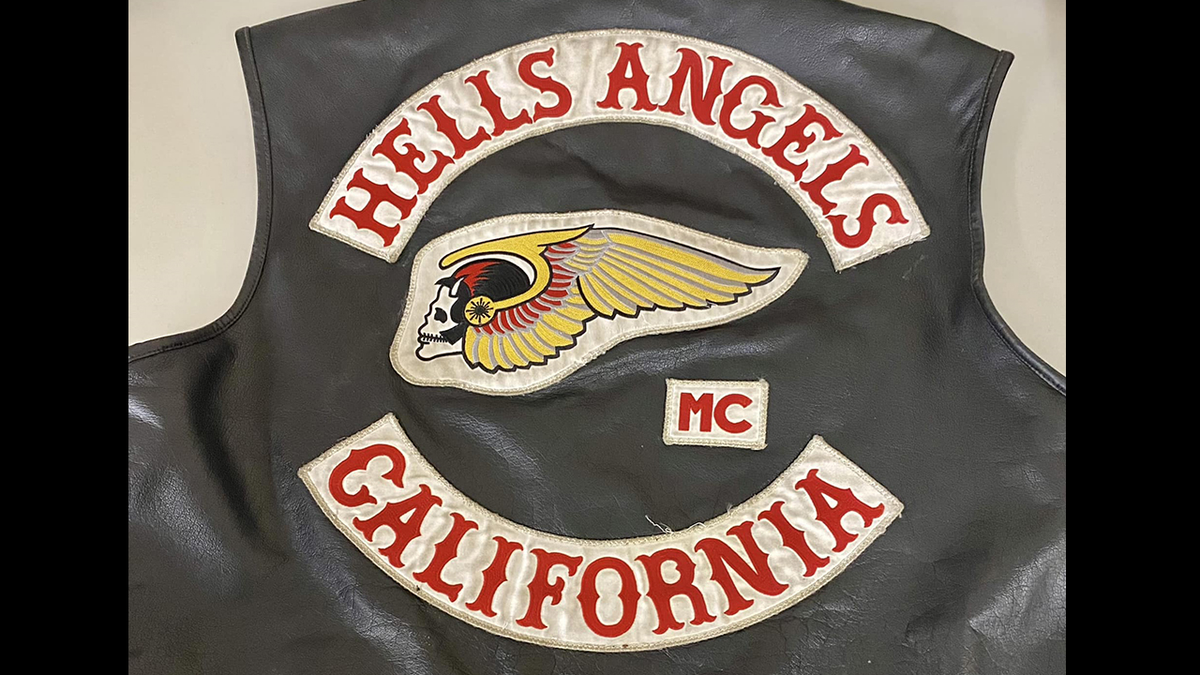Hells Angels: A Look At Their Criminal Activities And Investigations

Table of Contents
The Structure and Organization of the Hells Angels
The Hells Angels' success in operating a vast criminal network stems from its unique structure and organizational principles. Understanding this structure is crucial to comprehending the scope of their criminal activities and the difficulties in investigating them.
Global Chapters and Hierarchy
The HAMC operates a decentralized yet highly interconnected structure. The organization is divided into numerous chapters, geographically dispersed across the globe, each with its own leadership and operational focus. However, there's a clear hierarchy connecting these chapters.
- President: The ultimate authority within a chapter, responsible for all operations and decision-making.
- Vice President: Second-in-command, often taking on increased responsibilities when the president is absent.
- Sergeant-at-Arms: Enforces club rules and discipline, often responsible for resolving internal conflicts and external threats.
- Treasurer: Manages the chapter's finances, a crucial role in managing the proceeds from illegal activities.
Furthermore, the club utilizes a system of "prospects," individuals who are undergoing a probationary period before becoming full-fledged members. This allows the Hells Angels to assess their loyalty and suitability before granting them full membership. The notorious "1%" biker identity, embraced by the HAMC, symbolizes their defiance of societal norms and their embrace of outlaw culture, reinforcing their image and fostering a sense of brotherhood amongst members.
Secrecy and Communication
Maintaining secrecy is paramount to the Hells Angels' survival and continued operation. They employ various methods to evade law enforcement and communicate securely amongst members.
- Encrypted Communication: The use of encrypted messaging apps and coded language allows members to communicate sensitive information without fear of interception.
- Coded Language: A complex system of slang and jargon is employed to disguise their conversations, making it difficult for law enforcement to decipher their meanings.
- Face-to-Face Meetings: Direct, in-person communication minimizes reliance on electronic means, mitigating the risk of surveillance.
Types of Criminal Activities Associated with the Hells Angels
The Hells Angels' criminal activities are remarkably diverse, encompassing a wide range of illegal enterprises. These activities are interconnected, often supporting one another and maximizing their overall profits.
Drug Trafficking
Drug trafficking is a core element of the Hells Angels' operations, generating substantial income and fueling their other criminal enterprises. The club's involvement spans various illicit substances, including:
- Methamphetamine: A highly profitable drug, facilitating extensive distribution networks.
- Cocaine: A high-demand drug, enabling the HAMC to maintain strong ties with international drug cartels.
- Marijuana: Cultivation and distribution contribute significantly to their revenue streams.
Money laundering is essential to concealing the profits from drug trafficking, often involving complex financial transactions and shell corporations. Numerous high-profile convictions demonstrate the scale of the Hells Angels' involvement in this lucrative but highly dangerous criminal activity.
Violence and Extortion
Violence is deeply ingrained in the Hells Angels' culture, used to enforce their dominance, intimidate rivals, and maintain control over their territories. Examples include:
- Assaults and Beatings: Used to settle disputes or punish those who cross them.
- Murders: Instances of murder are often used to eliminate rivals or deter challenges to their power.
- Extortion and Racketeering: Using intimidation and threats to extort money from businesses and individuals.
The club's use of weapons, often including firearms, reinforces their violent reputation and helps maintain control over their territories.
Other Criminal Enterprises
Beyond drug trafficking and violence, the Hells Angels are involved in various other criminal enterprises:
- Money Laundering: Essential to concealing profits from their illegal operations.
- Weapons Trafficking: Providing weapons to other criminal organizations.
- Prostitution: Controlling and profiting from prostitution rings.
Law Enforcement Investigations and Challenges
Investigating the Hells Angels presents significant challenges for law enforcement agencies worldwide. The organization's structure and operational methods make it difficult to dismantle their criminal networks.
Challenges in Investigating the Hells Angels
- Secrecy and Cohesion: The HAMC's highly secretive nature and strong internal bonds make it difficult to infiltrate and gather information.
- Witness Intimidation: Potential witnesses are often reluctant to cooperate due to fear of retaliation.
- Decentralized Structure: The dispersed nature of chapters makes coordination amongst law enforcement agencies difficult.
Notable Investigations and Raids
Despite these challenges, numerous successful investigations and raids have targeted the Hells Angels. These operations often involve:
- Undercover Operations: Infiltrating the club to gather intelligence and evidence.
- Wiretaps: Intercepting communications to gather crucial information.
- International Cooperation: Collaboration amongst different law enforcement agencies is crucial to combating the club's global reach.
While significant progress has been made, the fight against the Hells Angels remains an ongoing battle requiring sustained effort and collaboration.
Conclusion
The Hells Angels Motorcycle Club represents a formidable and enduring threat, engaging in a vast range of criminal activities, from drug trafficking and violence to money laundering and weapons trafficking. Their sophisticated structure, combined with a culture of secrecy and violence, poses significant challenges for law enforcement. Understanding the intricate workings of the Hells Angels and the challenges faced in investigating their criminal activities is crucial to combating organized crime effectively. Continue your research into the Hells Angels and their impact on communities worldwide, learning more about the ongoing fight against this notorious organization and its continuing criminal enterprises.

Featured Posts
-
 Trump Loses Another Case In Fight Against Elite Legal Counsel
May 26, 2025
Trump Loses Another Case In Fight Against Elite Legal Counsel
May 26, 2025 -
 Tadej Pogacars Tour Of Flanders Strava Data No Flag This Year
May 26, 2025
Tadej Pogacars Tour Of Flanders Strava Data No Flag This Year
May 26, 2025 -
 Uefa Nin Real Madrid Sorusturmasi Ne Bekleniyor
May 26, 2025
Uefa Nin Real Madrid Sorusturmasi Ne Bekleniyor
May 26, 2025 -
 Federal Investigation Massive Office365 Executive Data Breach
May 26, 2025
Federal Investigation Massive Office365 Executive Data Breach
May 26, 2025 -
 Ahtjajat Mtwaslt Btl Abyb Mtalb Bieadt Alasra
May 26, 2025
Ahtjajat Mtwaslt Btl Abyb Mtalb Bieadt Alasra
May 26, 2025
Latest Posts
-
 Parents D Eleves De Bouton D Or Alertent Sur Le Manque De Remplacants
May 30, 2025
Parents D Eleves De Bouton D Or Alertent Sur Le Manque De Remplacants
May 30, 2025 -
 Inquietude A Bouton D Or Manque De Remplacants Et Surpopulation Des Classes
May 30, 2025
Inquietude A Bouton D Or Manque De Remplacants Et Surpopulation Des Classes
May 30, 2025 -
 Engagement Politique De Laurent Jacobelli Depute De La Moselle
May 30, 2025
Engagement Politique De Laurent Jacobelli Depute De La Moselle
May 30, 2025 -
 Elections 2027 Le Pen Face A Un Possible Empechement Selon Jacobelli
May 30, 2025
Elections 2027 Le Pen Face A Un Possible Empechement Selon Jacobelli
May 30, 2025 -
 Le Depute Laurent Jacobelli Rn Un Portrait
May 30, 2025
Le Depute Laurent Jacobelli Rn Un Portrait
May 30, 2025
